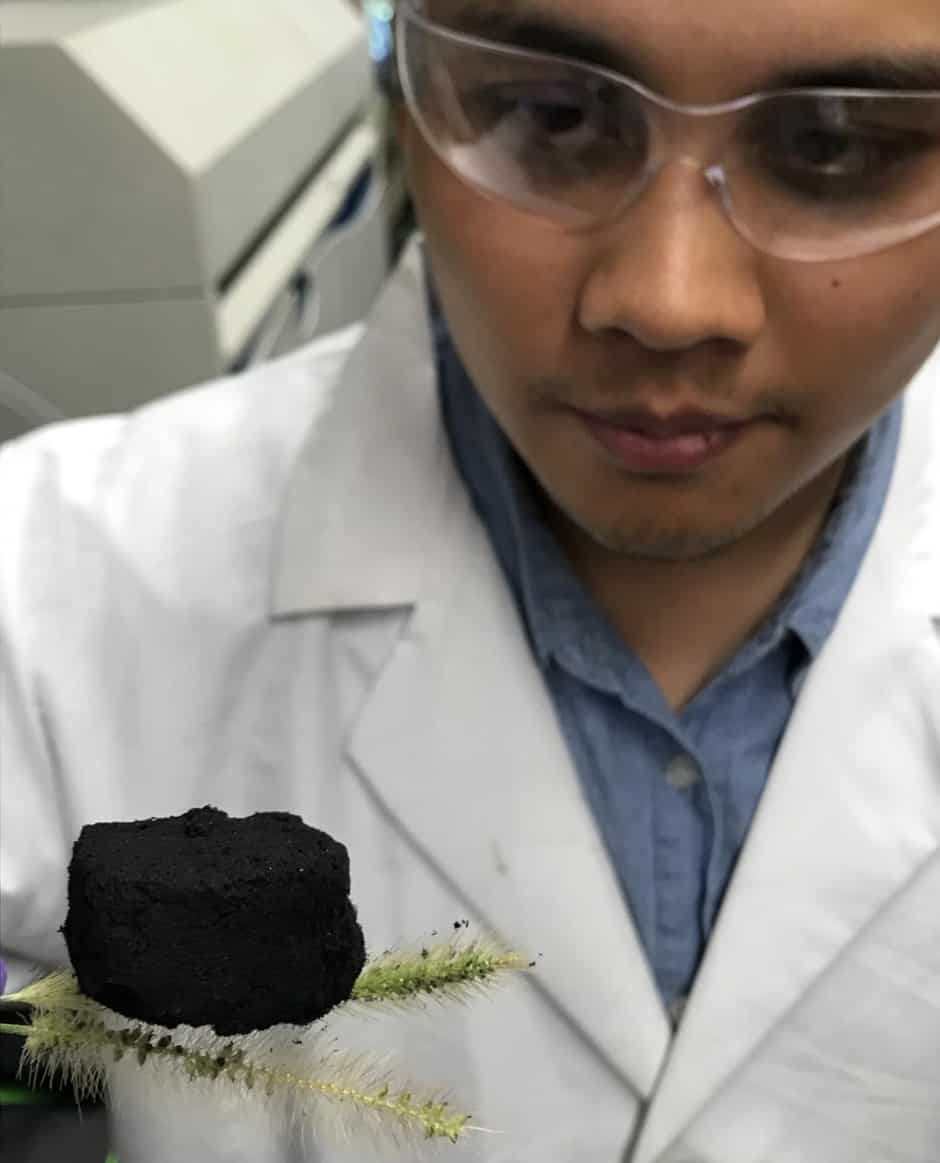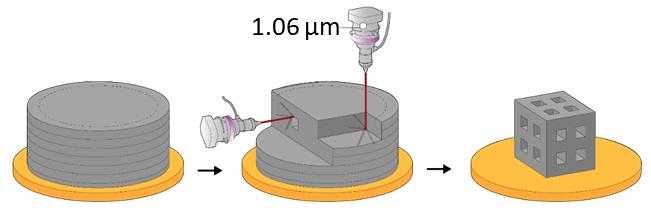Graphene has often been touted as the ultimate two-dimensional material. However, chemists at Rice University in Houston, Texas, have devised a method for making and sculpting three-dimensional blocks of graphene foam. The soft, porous solids can be used as supports for components of batteries and super-capacitors and as a mould for materials to make flexible, conductive sensors.

Duy Xuan Luong with a block of LIG Image: Tour Group/Rice University
The work was carried out in laboratory of Prof James Tour, a synthetic organic chemist who specialises in nanotechnology and is also a professor of computer science. Four years ago, Tour’s laboratory was the first to synthesise laser-induced graphene (LIG) by heating films of polyimide, a polymer commonly used in industry, with a laser. This method creates a two-layered structure, with the polyimide remaining intact at the base but the upper layer transformed into interconnect flakes of graphene.
The team has now developed this technique further to make complete blocks of this graphene material, rather than simple sheets. It is done in a manner similar to additive manufacturing, where the block of graphene foam is built up from layers. Initially, a single sheet of polyimide is treated as before. It is then coated with ethylene glycol and another layer of polyimide placed on top. The top of this layer is again burned with a laser to transform it into LIG. The process is repeated with additional layers until the block of the desired size is created. The block is then placed onto a hot plate to evaporate away the ethylene glycol, then transfer to a furnace to burn off remaining polyimide, leaving behind a spongy block of interconnected graphene flakes with pores measuring 20 to 30nm in diameter.

The foam is assembled by burning polyimide film into laser-induced graphene, then stacking more polyimide on top with an ethytlene glycol binder and repeating the processs Image: Tour Group/Rice University
In the journal Advanced Materials, Tour and his students, led by Duy Xuan Luong, explain how they modified a 3D printer with a custom-built fibre laser to mill the block into complex shapes. They also carried out some application trials, using the LIG blocks as anode and cathodes in lithium ion capacitors. The anode achieved a gravimetric capacity of 354 milliamp hours per gram, near to the theoretical limit of graphite, while the cathode’s capacity exceeded the average capacity of other carbon materials, they said. "This is excellent performance in these new-generation lithium-ion capacitors, which capture the best properties of lithium-ion batteries and capacitor hybrids," Tour said.

The LIG block can be laser-milled into shape Image: Tour Group/Rice University
The team also infused LIG block with liquid poly-dimethyl siloxane, creating a stronger conductive material of the same shape but with greater strength. From this material, they made a flexible sensor that accurately recorded the pulse from the wrist of a volunteer. Further calibration of this device would allow them to derive blood pressure from the pulse waveform, they claim. "This truly brings graphene into the third dimension without furnaces or the need for metal catalysts, and our process is easily scaled," Tour claimed.




Nanogenerator consumes CO2 to generate electricity
The chemistry seems incredibly complex. When the article came out here in Australia the News report was really funny because they scientist/researcher...